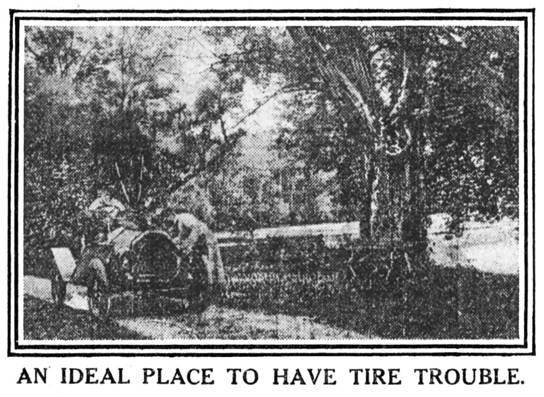One Lot at a Time, or A Whole Lot at a Time?
To those of us who grew up in Hicksville after WW II, seeing a few standard models of houses repeat across large subdivisions seems normal. In early 1900s Nassau County, however, it was something new. Traditionally, most rural homes had been built one at a time, usually for the people who expected to live in them. Sometimes, when there was a need to house a number of new people in a village, several homes might be built at more or less the same time. There was a limit as to how much could be done at once, for building many houses at the same time in one locale took more materials and skilled labor than most small country builders could muster.

New York Sun, May 6, 1913
Now, like holes forming in a dam, the tunnels were almost ready to release pent-up pressure. A flood of New York City families was going to need thousands of new homes, all at once. To meet that need, builders would resort to building houses in a few standard varieties, designed to anticipate the tastes of hypothetical average buyers. Small, hands-on individual builders began to fade, as construction companies built subdivisions. Every month, more farms and woodlands were turning into open land with new streets. There was not much town planning; houses were erected wherever land convenient to transportation could be purchased. Chunk by chunk, the character of Long Island was beginning to change.
Long before the railroad finally rolled trains into Manhattan, speculators had bought large tracts of land. As the tunnel construction progressed, "land companies" offered parcels of land to builders, who would construct houses and put them on the market as soon as they could. Advertisements like the one below had appeared well in advance of Tunnel Day, and they would keep appearing, as long as there was land to be sold.

Note that one advantage of Massapequa was Hicksville Road,
one of "Long Island's two great thoroughfares."
Brooklyn Daily Eagle, April 17, 1909
*
The Long Island Railroad placed a full-page ad in local newspapers, promoting the idea that Long Island (thanks to its beauty and variety) was a great place to visit, and alsoa great place to live.

Brooklyn Daily Eagle, September 8, 1910
After the introductory words above, the advertisement took the reader from Pennsylvania Station, "the handsomest and largest [railroad station] in the world," through the "marvelous" tunnels, to places where everyone could find everything they might ever want. No exaggeration there, right? There were fertile soils in which to plant, beaches at which to bathe, fishing reserves, and golf courses galore. The local roads (almost all of which were unpaved, incidentally) were "superb." Along the way, the reader was treated to pictures like One of Long Island's Charming Nooks, A Bit of Long Island Sea Coast, or this one:

The photographs were well chosen to entice vacationers, but none of them hinted at all the houses that would have to be built nearby in order to house new middle-class residents. Obviously, there was a flaw in the idea of encouraging commuters by the thousand to live in unspoiled rural surroundings. The more people who bought into the idea, the less likely it was that idyllic spots on the Island, the magnets that drew people eastward, could survive as they were. Soon there would be coal-fired generating stations, power lines, new roads, sidewalks, gas stations, clumps of housing, and at least twice as many people as before.
Looking back at that day's edition of the Eagle, one may feel that there was more naïveté than dishonesty at work, but either way, it overlooked most of the negative implications of the suburban life that it was promoting. At times, there even was some levity:

Yes, this was the lead-in to a Long Island real estate advertisement.
***

